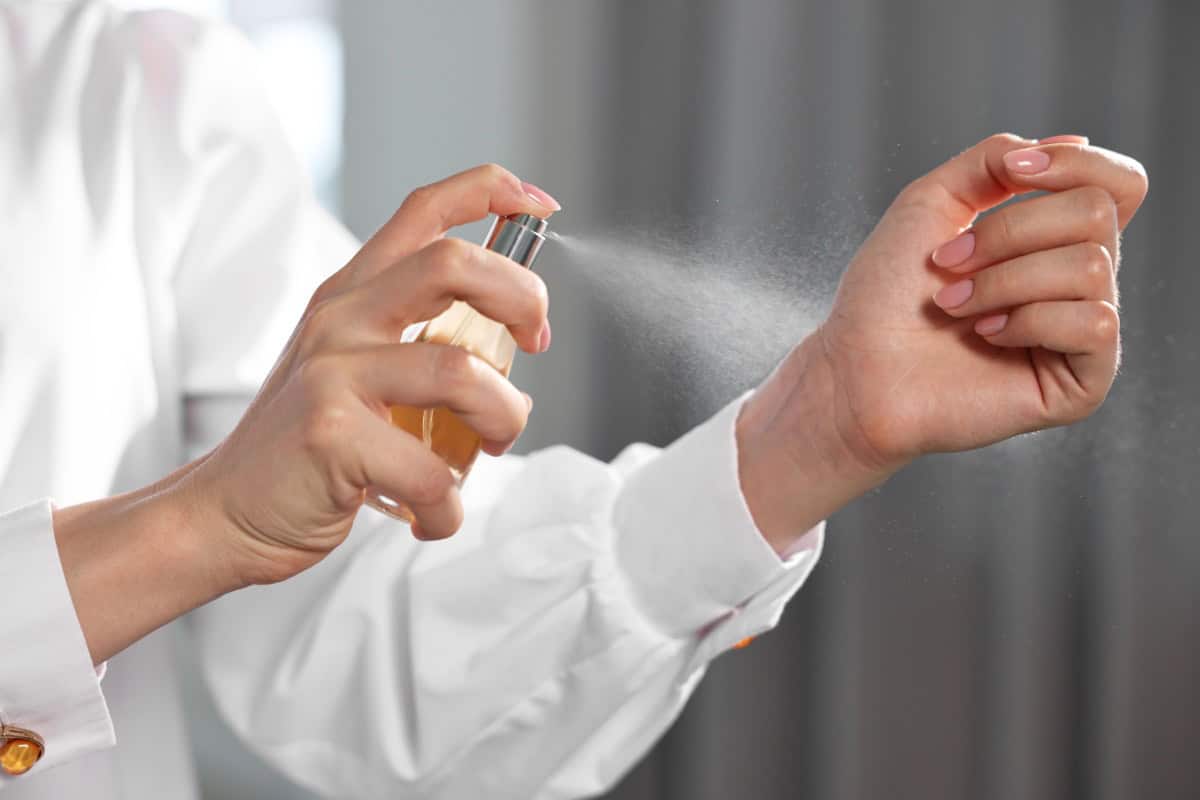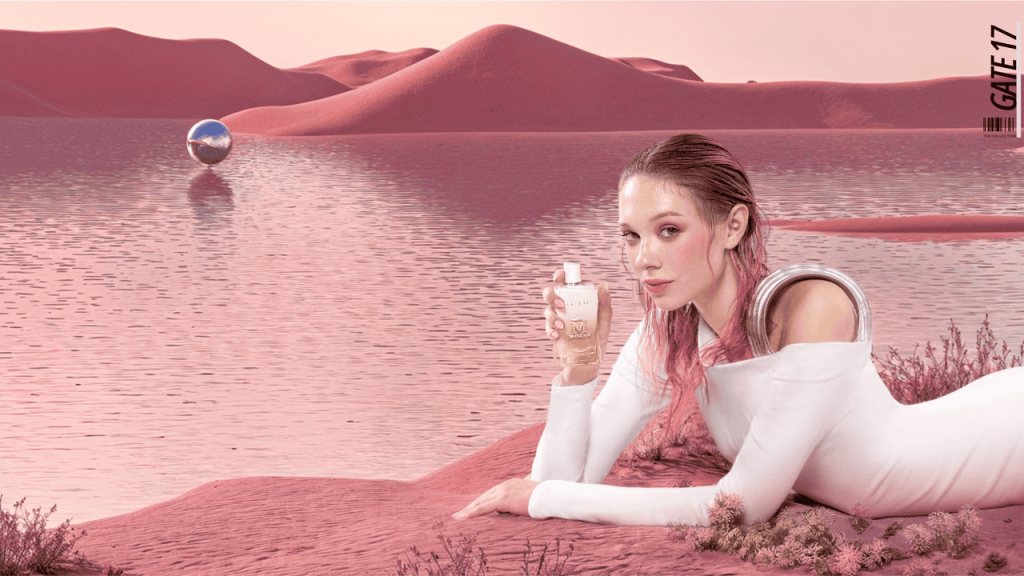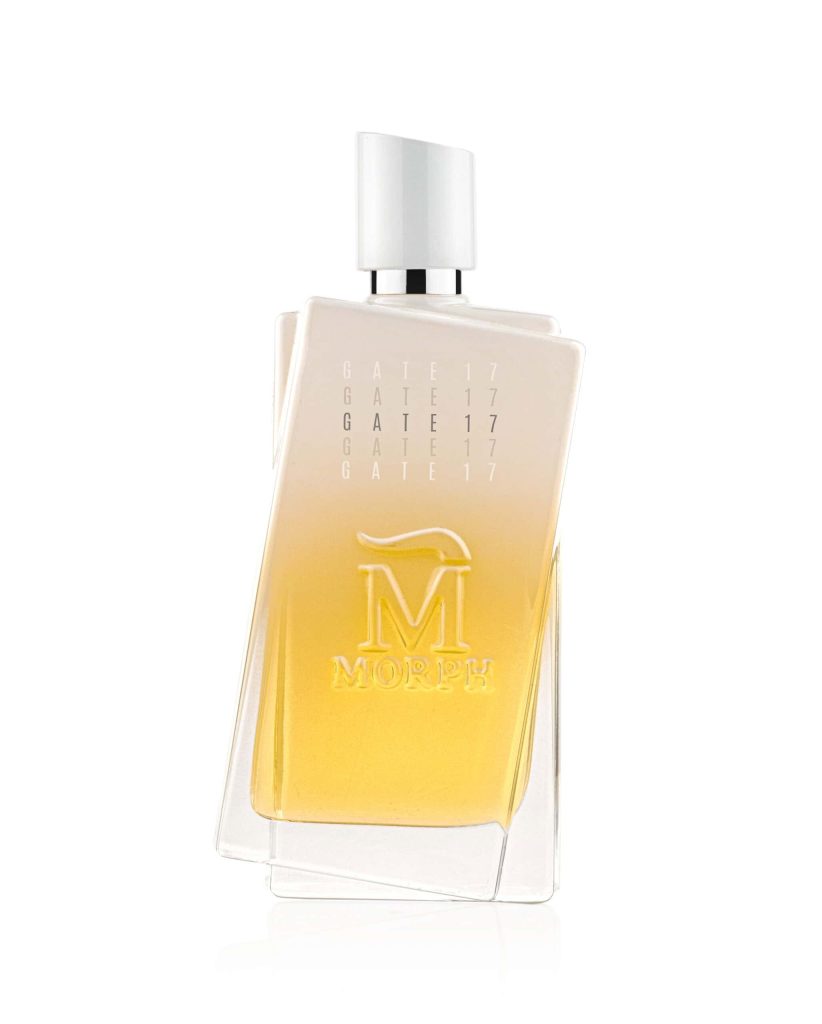
Perfumes have fascinated mankind for millennia, representing more than just pleasant scents - they are a form of art and personal expression. The history of perfumes has its roots in antiquity, with origins in Egyptian, Mesopotamian and Roman civilizations. The word "perfume" comes from the Latin "per fumum", meaning "through smoke", referring to the practice of burning aromatic raw materials. Over time, the art of perfumery has evolved to become a sophisticated and global industry today, with niche creations delighting the senses of even the most discerning connoisseur.
The distinction between eau de parfum and eau de toilette is important to understand the nuances and characteristics of each type. These two forms of fragrance differ in essential oil concentration, persistence and intensity, offering unique olfactory experiences that can perfectly complement your personality and style. A fragrance Well chosen is an extension of personal identity, a sophisticated way of communicating without words.
Eau de parfum, also known in French as eau de parfum (EDP), is a higher category in the perfume hierarchy, just below pure perfume. This refined form of fragrance is distinguished by its high concentration of essential oils, which give it an intense and long-lasting olfactory presence appreciated by connoisseurs.
Unlike more diluted forms, eau de parfum contains between 15% and 20% essential oils, making it significantly more concentrated than eau de toilette. This high concentration not only intensifies the fragrance, but also gives it a remarkable complexity and depth, worthy of the most exclusive perfumery creations.
Eau de parfum is the result of a meticulous creation process in which renowned perfumers masterfully combine rare essential oils, high quality fixatives and solvents such as the finest ethyl alcohol. This sophisticated composition allows the eau de parfum to develop a complex olfactory structure, with well-defined top, middle and base notes that gradually reveal themselves throughout the day.
A distinctive aspect of eau de parfum is its subtle evolution on the skin. Thanks to the high concentration of oils, the fragrance develops gradually, revealing successive layers of fragrant notes over the course of hours. This gradual evolution creates a dynamic and captivating olfactory experience, appreciated by those with refined senses.
One of the most praised qualities of eau de parfum is its remarkable persistence. In general, an application of eau de parfum can last 6 to 8 hours on the skin, sometimes even longer, depending on the specific composition and individual factors. This durability makes it ideal for gala events or for people who want a constant and sophisticated olfactory presence throughout a busy day.
The intensity of eau de parfum is also notable. Its aroma is more pronounced than that of eau de toilette, creating a strong and memorable olfactory impression. This intensity allows you to apply a smaller amount of product and still achieve a significant and lasting effect.
Given its high concentration, eau de parfum requires careful application. It is recommended to apply to the pulse points of the body, such as the wrists, neck or behind the ears, where body warmth will help the fragrance to diffuse gradually. For social events or formal occasions, eau de parfum is often preferred for its distinctive and long-lasting presence, perfectly complementing elegant outfits and refined atmosphere.
This eau de parfum is a sophisticated choice for connoisseurs who appreciate high quality fragrances. Its unique combination of high concentration, long persistence and complex evolution makes it an excellent choice for those who want to express their personality through a refined and long-lasting fragrance.
Eau de toilette, known in French as 'eau de toilette' (EDT), is a distinct category in the world of fragrances, falling between eau de parfum and eau de cologne in terms of concentration and intensity. This form of perfume offers a lighter, fresher olfactory experience and is often preferred for everyday use by connoisseurs who appreciate subtlety and understated elegance.
Unlike eau de parfum discussed above, eau de toilette contains a lower concentration of essential oils, usually between 5% and 15%. This more diluted composition gives it a subtler and more volatile fragrance that develops differently on the skin compared to eau de parfum, providing a unique and refined olfactory experience.
A fascinating aspect of eau de toilette is the way it brings out the top notes of the fragrance. Due to the lower concentration, these notes are more prominent and immediately noticeable after application, giving a feeling of freshness and vitality. This makes the eau de toilette particularly appreciated in warmer seasons or in work environments where too intense a fragrance could be overpowering, but where a refined olfactory presence is still desired.
Compared to eau de parfum, eau de toilette has a shorter persistence time, usually 3 to 4 hours. This characteristic makes it ideal for those who prefer to refresh their fragrance throughout the day or who want to change the scent according to their activities.
The lower intensity of toilet water should not be seen as a disadvantage, but rather as a quality that makes it versatile and suitable for a wide range of situations. Its lighter scent allows for a more generous application without the risk of becoming overwhelming to those around, a trait appreciated in environments where subtlety is at a premium.
This eau de toilette is great for everyday use, suitable for the office, informal meetings or outdoor activities. Due to its more volatile nature, it can be applied more frequently, allowing you to maintain a pleasant and discreet olfactory presence throughout the day.
An additional advantage of toilet water is its adaptability to different seasons. While eau de parfum can sometimes be too intense for hot summer days, eau de toilette offers a refreshing and refreshing alternative. Citrus or marine scents, often present in luxury toilet waters, are particularly appreciated in the summer season.
So eau de toilette is a versatile and refined option. Offering a perfect balance between freshness, subtlety and adaptability, it proves to be an excellent choice for connoisseurs looking for a pleasant and discreet olfactory presence in everyday life without compromising on quality or refinement.
This comparison will give you an in-depth insight, helping you choose the perfect fragrance for different occasions and personal preferences.
The main difference between eau de parfum and eau de toilette is the concentration of essential oils. This difference in concentration has a significant impact on the olfactory experience, influencing not only the intensity, but also the complexity and evolution of the aroma. Eau de parfum, with 15-20% essential oils, offers a richer and more complex fragrance with a gradual evolution of notes throughout the day. In contrast, eau de toilette with 5-15% essential oils has a lighter and fresher fragrance, with an emphasis on the top notes, a feature appreciated by connoisseurs who prefer a more subtle but refined olfactory presence.
This difference in concentration influences not only the intensity of the aroma, but also the way the fragrance interacts with the individual skin chemistry, creating a unique experience for each wearer. This is particularly important in the world of luxury fragrances, where uniqueness and personalization are highly valued.
A crucial aspect in choosing between eau de parfum and eau de toilette is how long the scent lingers. Eau de parfum can last between 6 and 8 hours or even longer on the skin, while eau de toilette has a shorter persistence time, usually between 3 and 4 hours. This difference in longevity influences not only the frequency of application, but also the choice of fragrance depending on the duration of the event or activity for which it is intended. For long-lasting galas or events, eau de parfum may be preferred, while eau de toilette is ideal for daytime meetings or activities requiring a more discreet olfactory presence.
Each type of fragrance has its place depending on the context and the social demands of the environment in which you find yourself. Eau de parfum is ideal for special occasions, evening events or situations where a stronger, long-lasting olfactory presence is desired, perfect to complement an elegant outfit at a gala event. On the other hand, eau de toilette is great for everyday use, in the office or in casual situations, providing a pleasant fragrance without being overpowering, suitable for business meetings or fine dining. This versatility allows you to adapt your choice of fragrance to suit your lifestyle and daily activities, while always maintaining a high level of refinement.
A fascinating aspect to note is how these two types of fragrances adapt to the different seasons. Eau de parfum, with its more intense fragrance, may be better suited to the colder season, when scents tend to be more subtle and a stronger olfactory presence is desired. Eau de toilette, with its characteristic freshness, is often preferred in the warm season, providing a cooling and invigorating sensation, perfect for outdoor events or summer cocktails. This seasonal adaptability allows you to adjust your olfactory choices according to climatic conditions and personal preferences specific to each season, while always maintaining a high level of sophistication.
When choosing between eau de parfum and eau de toilette, there is no universal 'superior' option. The decision depends on a combination of personal factors, including olfactory preferences, lifestyle, occasions of use and, of course, available budget. Understanding these key differences will help you to make informed choices and fully enjoy the olfactory experience of your chosen fragrance, regardless of the social context or occasion for which you wear it.

Photo source: Morphparfum.ro
Having explored eau de parfum and eau de toilette in detail, it is essential to make a further distinction by looking at the difference between perfume extract and eau de parfum. This comparison will give you a complete overview of the spectrum of concentrations in perfumery, allowing you to make even more informed choices worthy of a true connoisseur.
The main difference between fragrance and eau de parfum lies in the concentration of essential oils, a crucial aspect for those who appreciate the subtle nuances of luxury fragrances. Perfume, also known as 'extrait de parfum' or 'pure perfume', contains the highest concentration of essential oils, usually between 20% and 30%, sometimes up to 40%. In comparison, eau de parfum, as you have previously learned, has a concentration of 15% to 20% essential oils. This difference in concentration significantly influences not only the intensity of the aroma, but also the complexity and evolution of the fragrance on the skin.
The fragrance, as are all Morph fragrances - from the range of Ice perfumesthe Luxury fragrances, offers a unique olfactory experience with remarkable persistence. It can last on the skin for up to 24 hours, sometimes even longer, an essential quality for long-lasting events or for those who wish to maintain a constant and sophisticated olfactory presence. The evolution of the aroma is more complex and nuanced, with a slow and subtle transition between top, middle and base notes, offering a deep and multidimensional olfactory experience.
How to apply and use differ significantly between perfume and eau de parfum, reflecting their distinct nature. Perfume, due to its high concentration, requires very careful application and minimal quantities. Often a single drop or two is enough to create a strong and lasting olfactory presence.
It is this difference in application that often makes perfume considered the ultimate luxury product. Perfume is associated with formal events of the highest level, gala evenings or moments when you want to make a special impression in the most exclusive circles. Eau de parfum, while still a luxury option, is more suitable for regular use in sophisticated environments.
The difference in concentration is also reflected in the price of the products, an important aspect for connoisseurs investing in niche fragrances. Perfume, being the most concentrated, is usually the most expensive of all forms of fragrance, reflecting the superior quality of the ingredients and the complexity of the creative process. Eau de parfum, although more expensive than eau de toilette, remains more affordable than pure perfume.
Perfumes are those that tell a story through the notes they give off. For example, the fragrance Cruda can be described as follows: on a mysterious night, he remembers her - the enigmatic woman whose name remains unspoken but whose perfume still haunts his senses. Cruda de la Morph is the essence of this memory, an elixir that transcends time and space, capturing the intensity of shared moments.
Top notes of bergamot, cedar and black cumin lead the way to a pulsing heart of Damask rose, cinnamon and clove. At the base, accords of amber, patchouli, cashmeran, labdanum, vanilla, musk and tonka bean weave together in a deep and seductive olfactory symphony.
Cruda is more than a fragrance; it is a story about desire and pure emotion, an olfactory memory of a love that has left an indelible imprint on the soul.

Photo source: Morphparfum.ro
Another beautiful story is told by the fragrance Gate 17 - on a clear morning, when the horizon merges with infinity, Gate 17 by Morph invites you to step beyond the limits of reality, opening doors to unexplored and fascinating worlds. This fragrance is created for those who dream without restrictions and seek new emotions at every step.
Its composition starts with fresh notes of flowers and bright bergamot, embraced by the velvety sweetness of beeswax. At the heart of the fragrance, the elegance of iris intertwines with the warmth of cashmere wood and the freshness of marine notes, all wrapped in a veil of musk and amber. At the base, the creaminess of vanilla and the depth of vetiver leave a lingering and magnetic trail, inviting you to explore new horizons.
Gate 17 is more than just a perfume; it is a sensory journey for those who know that one world is never enough. One step, one breath.

Photo source: Morphparfum.ro
When choosing your perfume, consider your lifestyle. Analyze your daily schedule and regular activities carefully. If you frequently attend gala events, elegant dinners or high-level business meetings that run over a long period of time, the fragrance might be more suitable because of its longer persistence. For a more dynamic routine with frequent environmental changes or day meetings, eau de toilette can provide the flexibility needed for discreet refreshes throughout the day. You can also opt for sets from Morph to use body cream either in the morning or evening for a longer-lasting scent.
The professional environment also plays an important role. In some corporate environments or in the world of art and fashion, a distinctive fragrance can be appreciated. In these cases, a masterfully applied eau de parfum or perfume may be the perfect choice. In other professional contexts, where discretion is at a premium, an eau de toilette offers a more subtle and discreet alternative, perfect for maintaining a pleasant olfactory presence without being overpowering.
Season is another important factor to consider for the refined connoisseur. As mentioned earlier, eau de toilette may be more suited to the warm summer months, offering a refreshing freshness ideal for outdoor events or cocktails on the terrace. In contrast, eau de parfum may be preferred in the colder season, when more intense scents can penetrate layers of clothing and hold up better in cold conditions, perfectly complementing elegant winter outfits.
A crucial aspect in choosing the right fragrance is personal testing, a practice appreciated by connoisseurs. Each person has a unique skin chemistry that may interact differently with fragrances. Test several variations on your skin and carefully observe how the scent evolves throughout the day. Don't just rely on the smell in the bottle or on the test paper, as it can be significantly different from the smell on your skin. Take time to experiment with different scents and concentrations to find the perfect combination that reflects your personality and lifestyle.
Although we have discussed price differences in the previous section, it is also important to assess value for money. Perfume and eau de parfum, although more expensive, can offer better value in the long term due to their longer persistence and the need for less to apply each time. Eau de toilette can be a more economical option for those who want to change fragrances frequently or have a more varied collection of scents.
Application technique varies depending on the fragrance concentration. For eau de parfum and perfume, apply carefully to pulse points - wrists, neck, behind the ears. A small amount is sufficient due to the high concentration, allowing the fragrance to develop naturally and elegantly. For eau de toilette, you can apply more generously, including to clothes, but avoid excess to maintain a discreet and sophisticated olfactory presence. For lighter concentrations, apply more frequently and in larger amounts to keep the scent fresh throughout the day.
To extend the life of the fragrance on the skin, a popular technique is to moisturize the skin before application. This helps to lock in the scent and gradually release it, creating a richer, longer-lasting olfactory experience. You can use products from the same line, such as Morph sets, to create a subtle aromatic base before applying the fragrance, a practice appreciated for its olfactory consistency.
Avoid rubbing the areas where you've applied perfume, a common mistake. After application, allow the perfume to dry naturally on the skin. Rubbing can alter the molecular structure and reduce persistence, diminishing the complexity of the flavor. Apply the fragrance to warm areas of the body, such as the chest or inner elbows. Warmth helps to diffuse the fragrance, creating a more even olfactory presence.
To maintain fragrance quality and prevent alteration, proper storage is essential. Store fragrances in a dark place away from direct sunlight, which can degrade essential oils and alter the fragrance. Control the temperature, avoiding exposure to extreme fluctuations. A cool, dry place, such as a dedicated drawer or cupboard, is ideal for storing luxury fragrances. Keep perfume in its original packaging, which offers extra protection against light and temperature fluctuations. Be sure to close the lid tightly after each use to prevent evaporation and oxidation of the fragrance, thus maintaining its quality.

Photo source: Shutterstock.com
Feel free to combine fragrances to create a unique olfactory signature, a technique appreciated by refined connoisseurs. However, do so carefully so as not to create conflicting scents. You can experiment with layering, applying a lighter fragrance over a more intense one to create a personalized scent, reflecting the complexity of your sophisticated tastes.
Finally, remember that perfume is a form of personal expression. There are no strict rules in applying and wearing perfume, but rather guidelines to maximize the experience. The most important thing is to feel comfortable and confident with the fragrance you are wearing. Experiment, discover what works best for you and enjoy the olfactory journey each luxury fragrance offers, creating a unique and sophisticated olfactory presence in any social context.
Enjoy this sophisticated olfactory journey and allow yourself to discover the scents that define you best. In the world of luxury fragrances, every drop is an opportunity to express your uniqueness and create unforgettable memories. Let your senses be your guide and create your own olfactory signature that uniquely represents you and leaves an unforgettable impression in any elevated social context.